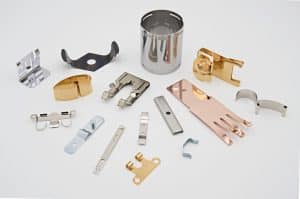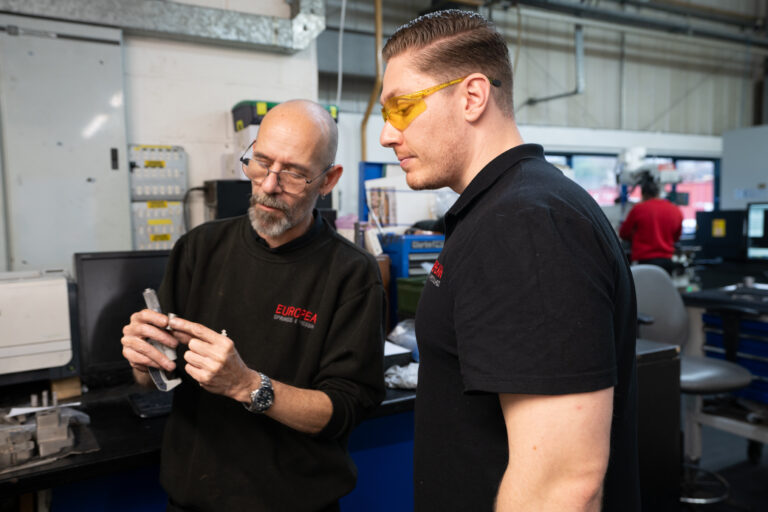As we have previously discussed in recent blog posts, springs can be anywhere. From the more obvious industries, such as manufacturing and the automotive sector, to the less obvious, including the fashion industry.
Another sector that is lesser-thought about, however, is the toy industry. At first thought, this may seem an unlikely area for springs to pop up. But spring-loaded toys have a rather long and dynamic history, with springs being used in children’s toys as far back as the 16th century!

But what is it about springs that make children’s toys so enjoyable? Could it be the element of surprise, as the toy recoils rapidly, or bounces backwards and forwards? Whatever the case, they are still a main player in the manufacture of some of the most successful toys available today.
The Slinky
No list of children’s toys including spring technology is complete without mentioning the iconic slinky! The idea for this iconic toy was born in 1943, when a naval engineer accidentally pushed a tension spring off of his desk.
By the Slinky’s official release, two years later, all 44 units had sold in a matter of minutes. Take a look at a previous blog post, the slinky success story, to find why it has stood the test of time.
Jack in the Box
Before the invention of television or video games, the ‘Jack in the box’ was one of the most popular children’s’ toy, dating right back to the 16th century!
This simple toy consists of a spring pushed down inside a box, held by a catch on the lid. When the catch is released, the force of a spring causes the lid to burst open, allowing a clown figure to pop out.
Trampolines

Coiled springs are to thank for our childhood favourite: the trampoline. The trampoline mat is held taut and given elasticity through several springs that connect the fabric to the frame and store potential energy.
With the growing popularity of the trampoline industry, the fun of trampolining does not have to be a distant childhood memory, but a fun activity for all ages.
Ride on Toys
Ride-ons, such as the much-loved rocking horse or the outdoor spring rocker, are timeless toys still loved by children today.
The spring rocker was invented in Denmark in the 1970s, and is commonly found in playgrounds today.
The toy utilises a singular large metal spring beneath a wooden or plastic structure, often designed to look like an animal or a motorbike.
Toy Car Launchers
A brilliant way to make toy cars travel further, launchers are cleverly designed and have provided great entertainment since their invention. For those that became car enthusiasts see how race car springs are used for their real counterpart or how springs are used for other automotive pressings.
There are two main types of launchers – gravity powered and spring powered. Both propel the toy car further than you would think.
Pull Back Toys
A spring unwinds fifteen times faster than the time it took to be wound. Along with Newton’s Third Law of Motion that every action has an equal and opposite reaction, this acts as the basis of how a pullback toy operates. Energy is stored quickly during the pullback action but then gets released during the forward motion.
A pull-back toy typically uses a coil spring, specifically torsion springs, as the primary mechanism for its action. When the toy is pulled back, the torsion spring is wound up. Upon release, the spring rapidly unwinds, transferring stored energy to the toy’s wheels or mechanism, propelling it forward. The spring’s ability to store and release mechanical energy allows the toy to move without the need for batteries or external power sources.
But, as kids, we don’t know this… So, watching a toy car travel 10 feet forwards after we only pull it back a couple of inches backwards leaves us feeling sheer joy and amusement.
Pin Ball Machine

Compression springs are known for their ability to store and release energy, making them suitable for applications that require repetitive and controlled motion, such as in a pinball machine.
Earlier versions of the pinball machine involved the player using a wooden cue stick to shoot a ball onto the playfield. Now they utilise spring-loaded knobs, or ‘plungers’, instead. Once pulled back and released, these small compression springs will send a ball flying around the playfield through an array of potential hazards.
To align the ball perfectly into the goal, and avoid these hazards, players can choose from a number of springs, ranging in strength, to create the perfect amount of tension – It’s not just a game of luck!
These machines are commonly found in arcades and now online, after the 80s and 90s saw a rise of pinball into the digital age.
Toy Cash Register
Toy cash registers gave us that amazing feeling of owning a whole till’s worth of our very own money, and coiled springs are integral to the register operating effectively.
In a toy cash register, several types of springs may be used depending on the specific mechanisms and features of the toy. Some common types of springs found in toy cash registers include:
- Torsion Springs: Torsion springs are used to provide rotational force and are often found in mechanisms such as the cash drawer, coin dispenser, or buttons that need to return to their original position after being pressed.
- Extension Springs: Extension springs are commonly used to provide tension and extension forces. They may be used in mechanisms like the cash drawer release mechanism or the printer mechanism, allowing for smooth and controlled movement.
- Compression Springs: Compression springs may be used in various parts of the toy cash register to provide resistance or compression forces. They can be found in buttons, dials, or other components that need to be pressed or depressed.
The specific types and sizes of springs used in a toy cash register can vary depending on the design and functionality of the toy.
All these amazing uses of springs demonstrate just how incredibly versatile they are. Here at European Springs, we have plenty of experience in creating bespoke spring solutions for a huge variety of clients and industries.







